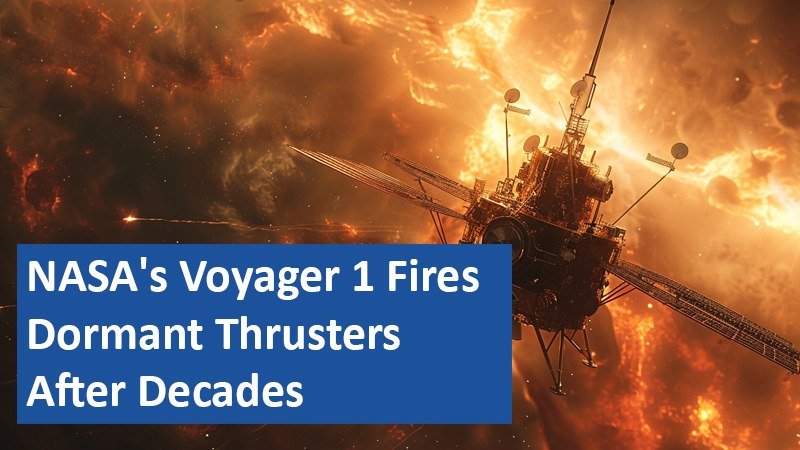NASA engineers have successfully reactivated a set of thrusters on Voyager 1, unused for decades, to keep the 47-year-old spacecraft communicating with Earth. With the probe billions of miles from our planet, this maneuver was critical to ensuring it stays on course. The aging spacecraft continues to surprise with its resilience.
By Julian James
Voyager 1’s Ongoing Journey

Voyager 1, launched in 1977, has far exceeded its expected lifespan, continuing to transmit data from interstellar space. Currently about 15 billion miles from Earth, the probe travels beyond the heliosphere, the Sun’s protective bubble of magnetic fields. As its components age, new challenges arise, requiring NASA engineers to find creative solutions to keep the mission alive. One such challenge emerged this year when the spacecraft’s thrusters started clogging, threatening its ability to communicate.
Thruster Issues Threaten Mission
Voyager 1 relies on its thrusters to maintain its orientation, ensuring its antenna stays pointed at Earth. Earlier this year, NASA detected a clog in the fuel tube of one set of thrusters, reducing their ability to produce the necessary force. If Voyager’s antenna drifts, it would lose contact with Earth, effectively ending the mission. The team had to quickly find a way to switch to an alternative set of thrusters to prevent communication loss.
A Complex Switch Between Thrusters
Voyager 1 has three sets of thrusters: two for attitude control and one for trajectory correction. Over the years, engineers have had to switch between these sets as clogging became an issue. In 2002 and again in 2018, NASA successfully switched thruster sets when clogs appeared. However, when checking the trajectory correction thrusters this year, engineers found them even more clogged than the previous sets, leading to a decision to return to one of the original thruster sets.
Extending Voyager’s Lifespan
After careful planning, NASA engineers successfully transitioned Voyager 1 back to one of its original thruster sets by briefly powering down non-essential systems. This solution is expected to extend the probe’s life by another two to three years. However, once these thrusters are no longer functional, the options for maintaining communication with Earth will become more limited, making future decisions even more complex.
Voyager 1’s continued operation demonstrates both the durability of the spacecraft and the ingenuity of NASA engineers. While the challenges grow as the spacecraft ages, each solution brings hope for extending its mission even further. The data collected by Voyager will continue to deepen our understanding of the universe for as long as it remains operational.
Based on information from www.edition.cnn.com and own research.